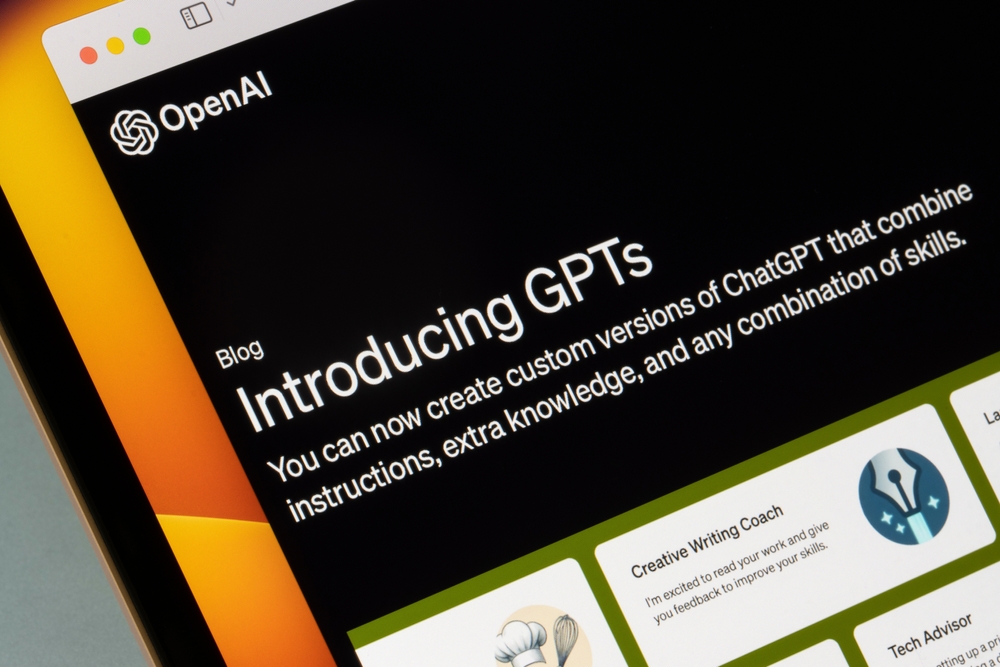
Artificial intelligence is all the rage these days, with marketing leaders across industries finding ways to implement it into their businesses and make their work more efficient. But while some AI tools available to company leaders, like OpenAI’s ChatGPT, are incredibly flexible, they still have limitations.
However, a new technology has been introduced that takes that flexibility a step further: custom GPTs.
How custom GPTs allow businesses to tailor large language models to their needs
Recently, ChatGPT has begun to offer the functionality of custom GPTs—personalized chatbots based on the source code of the core ChatGPT model, but tailored using a business’s specific dataset and knowledge base to inform its output. Many marketers have already leveraged machine learning and large language models like GPT-4 to create generalized output, such as templates for emails or proposals, but custom GPTs allow the AI’s functionality to become even more personalized for their business processes.
As the name suggests, custom GPTs allow extensive customization, making them ideal tools for a wide range of purposes. From drafting emails to serving as customer service chatbots, marketing teams have found several exciting use cases for custom GPTs.
Similarly, many have turned to the platform Zapier as a solution to help them automate their workflows, but Zapier, unfortunately, does not offer custom GPT integration through ChatGPT Plus. Rather, Zapier’s ChatGPT plugin only allows users to integrate the base GPT-4 model, not any custom chatbots they may have created on the platform.
Customization of GPT models using personal datasets
That being said, there is a workaround that would allow a marketer to integrate their custom GPT bot into their Zapier workflow: third-party AI chatbot tools, like GPT-trainer, Manychat, Voiceflow, botpress, and Intercom. These simple, no-code tools let users customize chatbots using a base prompt, customizable features, and input sources of the user’s choice. Although their functionality—and the level of skill required to use them—varies, they each have their advantages for marketers.
Once a marketing leader has completed the basic set-up process for their custom GPT, they will begin to train the chatbot using their unique knowledge base. Generally, the bare minimum the custom GPT will need as sources is a FAQ section with commonly asked questions and answers the chatbot may be expected to provide.
Beyond that, marketers can further enhance the model’s intelligence by training it on pages on their company’s website. Most impressively, though, this training process can be completed in minutes.
How to leverage custom AI solutions to your business’s advantage
One great example of a powerful use case for the functionality of third-party chatbot tools is creating a workflow for email responses. If a marketer sets a new email trigger in Zapier and links their custom GPT’s API key, they can instruct Zapier to create a draft reply. Although checking the GPT’s output for quality assurance purposes is still advisable, this method significantly reduces the time it takes to respond to emails.
Custom GPTs have the potential to fundamentally change the interactions businesses have with their customers for the better. At first glance, it may seem like designing a custom chatbot and integrating it with your automated workflow is intimidating. However, with the help of easy-to-use tools like third-party chatbot tools and Zapier, it is possible to create a custom workflow that will put ChatGPT’s custom artificial intelligence models to work for your business.
Scott Bartnick is Co-Founder & CEO of Otter PR.




